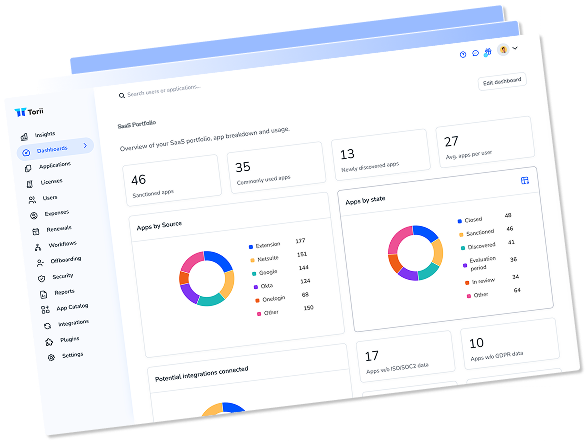Note: Many of the trends initiated by the pandemic have gone from radical to normal in no time. For an updated look at how IT is handling the “new normal,” check out our survey data report—Are you Embracing (Or Simply Tolerating) The New Normal?
As organizations of all sizes look to a COVID-19-free future, many of the steps they took to survive 2020 are likely here to stay. The two most consequential actions – sending employees to work from home and embracing cloud en masse to support those newly transplanted workers – have led to a true paradigm shift in how business as usual gets done.
While many employees will move back into the office as vaccination rates increase, many more will not. The same goes for the cloud. The agility and flexibility that the cloud provided during the early days of the pandemic have not gone unnoticed in C-suites and boardrooms. Taken together, these two trends represent serious bottom-line savings to organizations as they position themselves to take advantage of what many expect to be a strong economic recovery beginning in the second half of 2021.
The realization by business leaders that, without a cloud, their organizations would not have survived the pandemic, combined with the desire to increase operational efficiency and continue their digital transformation efforts, have all added fuel the cloud fire that was already burning bright before COVID-19 hit in January of 2020.
Three SaaS Trends Here to Stay
SaaS Spending: Up Only
According to the latest numbers from IT research firm Gartner, worldwide spending on cloud of all types – infrastructure- (IaaS), platform- (PaaS), and software-as-a-service (SaaS) – is expected to follow suit, growing at a robust 18.4% this year compared to last. By 2024, cloud is projected to make up 14.2% of all IT spending, a 5.1% increase over 2020 levels.
“The pandemic validated cloud’s value proposition,” said Sid Nag, research vice president at Gartner, in a statement. “The ability to use on-demand, scalable cloud models to achieve cost efficiency and business continuity is providing the impetus for organizations to rapidly accelerate their digital business transformation plans.”
While Gartner foresees the growth of PaaS surpassing IaaS and SaaS in 2021, spending on SaaS is double either IaaS or PaaS. Between now and the end of 2024 Gartner predicts SaaS spending will grow $37B from $101B in 2020 to $138B.
IT research firm IDC predicts that SaaS will deliver CAGR of 21% through 2024, accounting for more than 60% of all cloud spending worldwide.
Even though IT budgets in 2021 are expected to be flat or slightly declining, cloud spending is expected to increase as a total share of the budget, according to Deloitte’s TechTrends 2020 report. Over the next three years, Deloitte expects the percentage of the IT budget spent on the cloud to double. This money is flowing from other areas of the budget, such as hardware, which still makes up most of IT’s spending, according to the 2021 State of IT report from Spiceworks Ziff Davis.
“Cloud’s takeover of the enterprise is nearly complete,” the report said. “Ninety percent of organizations use cloud-based services, and they aren’t putting on the brakes.”
According to 451 Research, 32% of companies plan long-term and/or permanent spending increases on cloud services and SaaS, while 8% report shorter-term increases. Gartner predicts this number will be much higher at 70%. Only 5% indicated they were going to reduce spending on cloud and SaaS, with the majority saying their spending would remain the same.
Popular Apps Continue to Win
Not surprisingly, most of the money being spent on SaaS is going towards collaboration applications, according to FinancesOnline. In just a matter of weeks in early 2020, little-known video conferencing provider Zoom skyrocketed to fame as millions of people suddenly found themselves working from their kitchen tables.
The next most popular category of cloud spending last year was human capital management (HCM), followed closely by customer relationship management (CRM). Somewhat surprisingly, productivity apps, such as Microsoft’s Office 365, were not on FinanceOnline’s list. Those applications, along with cloud-based backup and recovery and email, did, however, feature prominently in Spiceworks Ziff Davis report cited above.
Shadow IT: Here to Stay
Of course, all of these new cloud apps will require new management tools if organizations are to make the most of these investments and get run-away shadow IT under control. Because of increased cloud adoption in 2020, 451 Research said they expect “enterprises to intensify their efforts to manage all their applications across hybrid environments using a single control plane, and to use consumption-based pricing to obtain only the resources they need when they need them.”
Most large organizations have more than 500 SaaS apps running at any given time. But this number is not static. Most organizations add 15-20 new apps per month, many with overlapping functionality. Project-management tools fall into this category more than any other class of application.
Because of the ever-increasing number of new SaaS apps and cloud-based solutions, like storage, SaaS management is gaining in popularity, market share, and importance, said Carl Lehman, principal analyst for applied infrastructure and DevOps at 451 Research, in an interview with ChannelPro UK.
“For a while, we’ve had cloud management systems to govern and control our multi-clouds – typically a combination of services for things like IaaS and PaaS,” Lehmann said in the article. “Most cloud management platforms manage cloud services from AWS or Google or Microsoft. What they don’t do is manage SaaS applications, which differ from infrastructure services. For example, a user might sign up for a free service and have an access procurement card. Suddenly that free service expires, and they get charged. Theoretically, under a SaaS management, you’d control some of that.”
So, to no one’s great surprise, cloud, and SaaS in particular, will continue to see rapid adoption as companies double-down on the digital transformation efforts that allowed them to survive and, in some cases, thrive, in spite of the economic upheaval caused by the COVID-19 pandemic.

